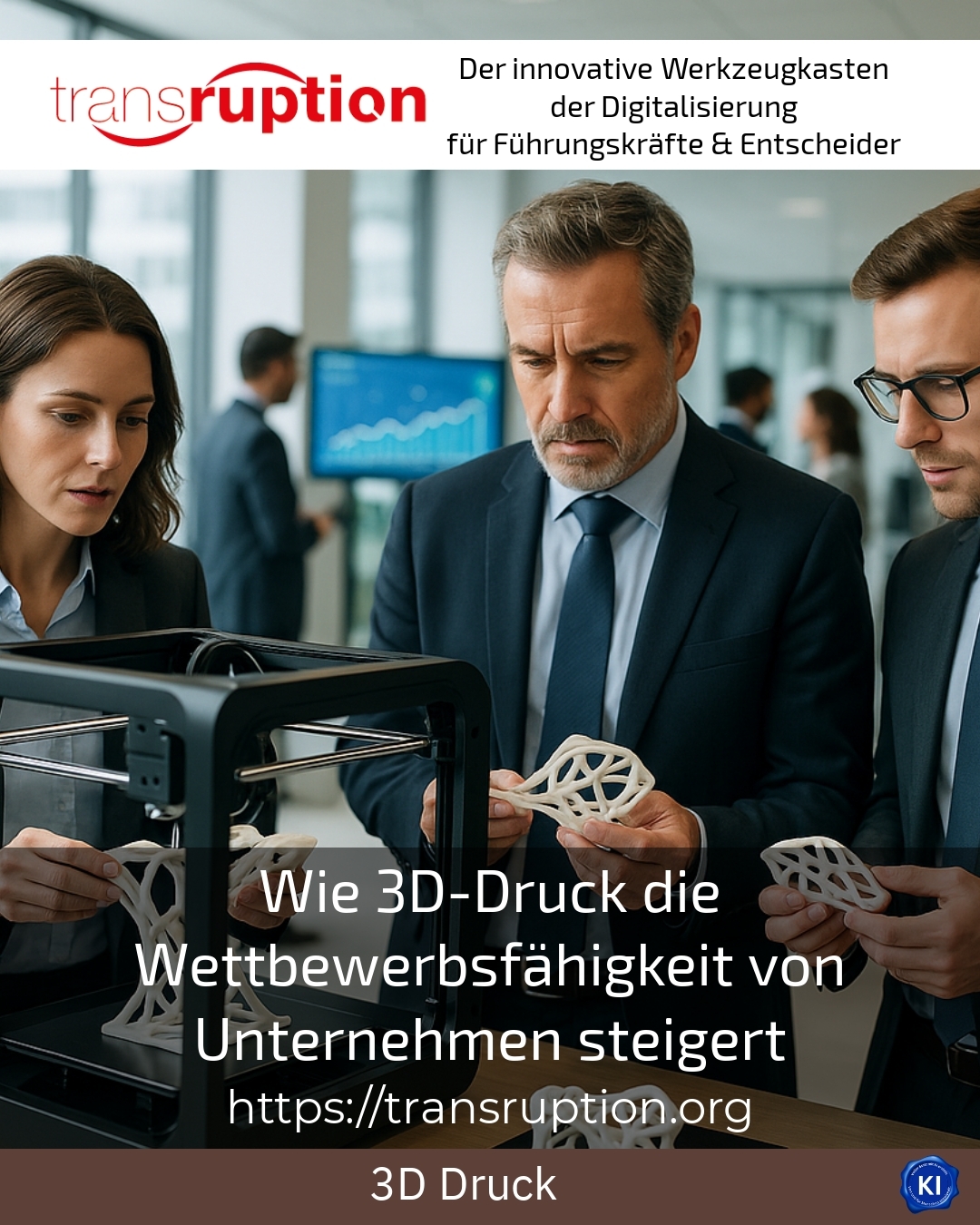3D printing is becoming increasingly important in many industries and is a decisive factor in strengthening the competitiveness of companies. Thanks to its innovative technology, it enables flexible and fast production of customised products - a clear advantage in dynamic markets. Companies that use 3D printing strategically benefit from shorter development times, lower costs and new business areas.
Flexibility and customised production with 3D printing
For a long time, the ability to produce customised solutions was only possible to a limited extent. 3D printing sets new standards here because it also enables the production of individual parts. This allows companies to precisely fulfil customer wishes without having to rely on mass production. For example, manufacturers of prostheses produce customised models in small batches, which increases patient satisfaction.
In the consumer goods industry, 3D printing is creating new product variants. For example, companies are producing personalised jewellery or limited edition collector's items that can be flexibly adapted to seasonal trends. On-site production in the transport and logistics sector also reduces storage and transport costs. Spare parts can be printed directly at the point of use, significantly reducing delivery times.
In the skilled trades, 3D printing is creating completely new services, such as the production of decorative elements or customised tools, which would otherwise be difficult to realise.
BEST PRACTICE at the customer (name hidden due to NDA contract) A medium-sized mechanical engineering company used 3D printing to quickly produce functional prototypes and recognise errors at an early stage. While competitors waited a long time for traditional manufacturing processes, he was able to significantly reduce time to market and respond more flexibly to customer requests.
Accelerated product development through rapid prototyping
The ability to print models in a short time leads to significant advantages in product development. Companies can test and optimise new designs more quickly and bring them to market. Start-ups and smaller companies in particular gain competitiveness despite limited resources.
Traditional processes often require expensive moulds that tie up time and capital. 3D printing eliminates these limitations as no moulds are required. This not only saves costs, but also enables a faster response to feedback and design changes.
For example, one car manufacturer is already using 3D printing to develop complex components for racing cars and produce prototypes at an impressive speed, which shortens innovation cycles enormously.
Cost optimisation and increased efficiency in production
3D printing also helps companies to reduce manufacturing costs. Additive manufacturing is ideal for small and medium batch sizes where conventional processes become uneconomical. Complex geometries can be realised economically with 3D printing, which would otherwise be difficult or impossible to produce.
In aircraft construction, for example, spare parts are manufactured on-demand and quickly, which drastically reduces warehousing. A shorter time-to-market and the ability to optimise parts plastically also increase product quality and competitiveness.
In architecture, too, companies benefit from the ability to print complex models directly. Implementation in automated production lines further increases efficiency and enables the production of large series with a high degree of flexibility.
The strategic use of 3D printing as a competitive advantage
The choice of whether and how 3D printing is integrated into the value chain has a significant impact on success. Companies should first analyse their actual needs and decide whether they want to use the technology for prototypes, spare parts or complex series.
Companies such as BMW and Airbus show that the integration of 3D printing brings benefits from early product development through to after-sales service. The technology supports rapid adaptation to customer requirements and dynamic markets.
In addition, completely new business areas are being opened up. For example, some companies offer individual promotional items or personalised products that are created using 3D printing and reach new customer segments.
Practical tips for companies on the use of 3D printing
- Start with pilot projects to familiarise yourself with areas of application for 3D printing and define optimum processes.
- Use external 3D printing service providers for sporadic requirements to minimise investments and tie up resources.
- Promote interdisciplinary dialogue between product development, production and sales in order to develop holistic solutions with 3D printing.
This means that the technology can be used not only as a tool, but also as a driver for innovation processes. In this way, 3D printing supports companies in the development of modern, competitive products.
My analysis
3D printing helps companies to position themselves better against the competition. Its flexibility, the acceleration of development processes and the opening up of new business areas offer clear advantages. The targeted integration of additive manufacturing creates room for innovation and enables companies to react to market changes in a targeted manner.
Companies that see 3D printing as an accompaniment to projects can pursue market requirements more efficiently and realise individual customer wishes. This makes 3D printing an important driver for increasing competitiveness in the long term.
Further links from the text above:
3D printing processes: Competitive advantages for decision-makers
3D printer manufacturer for the industry | voxeljet
Cars and aeroplanes: how 3D printing brings competitive advantages
New business areas and competitive advantages through 3D printers
Competitive advantage thanks to 3D printing
3D printer at Lush Cosmetics: from idea to production
3D printing stocks: 4 companies with potential
3D printing service providers provide a competitive advantage
Competitive advantages with 3D printing in the automotive sector
For more information and if you have any questions, please contact Contact us or read more blog posts on the topic TRANSRUPTION here.
















